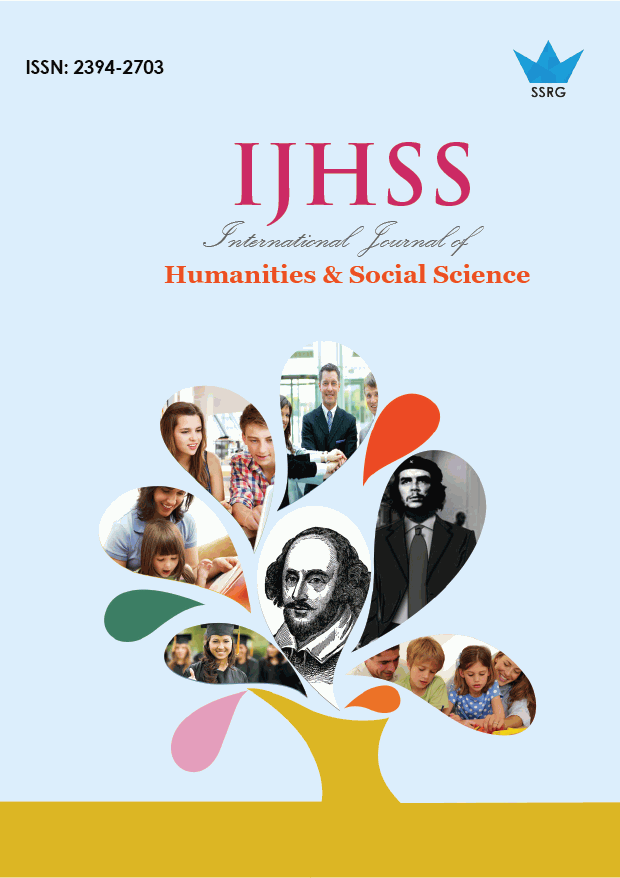Analysis of Media Discourse on the Palestinian-Israeli Conflict: A Critical Linguistic Analytical Study of UN Data

| International Journal of Humanities and Social Science |
| © 2025 by SSRG - IJHSS Journal |
| Volume 12 Issue 4 |
| Year of Publication : 2025 |
| Authors : Ilham Mohammed Ali Abdul Ameer, Yousif Ali Yousif, Ruaa Ali Mouhsin |
How to Cite?
Ilham Mohammed Ali Abdul Ameer, Yousif Ali Yousif, Ruaa Ali Mouhsin, "Analysis of Media Discourse on the Palestinian-Israeli Conflict: A Critical Linguistic Analytical Study of UN Data," SSRG International Journal of Humanities and Social Science, vol. 12, no. 4, pp. 32-37, 2025. Crossref, https://doi.org/10.14445/23942703/IJHSS-V12I4P104
Abstract:
This study critically analyses media discourse in United Nations statements and reports concerning the Palestinian-Israeli conflict from 2015 to 2025. The aim is to uncover the linguistic strategies used to frame the conflict and shape the international reader’s understanding. The research adopts the Critical Discourse Analysis (CDA) approach to examine UN reports' linguistic and semantic features, focusing on the extent of neutrality or bias in their treatment of the Palestinian issue. The findings reveal subtle linguistic shifts that suggest a tendency to support Palestinian rights despite efforts to balance the discourse and maintain a semblance of neutrality. The study also identifies rhetorical strategies such as repetition, positive framing of Palestinian rights, and portrayal of Israeli violations as breaches of human rights and international law. It highlights the role of language in constructing international discourse and its influence on public opinion and global policies related to the conflict. The study concludes with a call for further research to enhance transparency and accuracy in the media discourse of international institutions.
Keywords:
Critical Discourse Analysis, Palestinian-Israeli conflict, media discourse, United Nations, Linguistic bias.
References:
[1] Ronza N. Abu Rumman, Jihad M. Hamdan, and Amer Al-Adwan, “A corpus-based study of corruption metaphors: the case of the Jordanian ‘Hirak’ protest movement,” Cogent Social Sciences, vol. 10, no. 1, 2024.
[CrossRef] [Google Scholar] [Publisher Link]
[2] Lakshmi Priya, “Gaza Crisis and the Arabic Press: A Discourse Analysis,” Contemporary Review of the Middle East, vol. 11, no. 4, pp. 492-510, 2024.
[CrossRef] [Google Scholar] [Publisher Link]
[3] Muhammad bin Abi Bakr Al-Razi., Mukhtar Al-Sihah, Beirut: Dar al-Namudzajiyah, 1999.
[Google Scholar]
[4] Alfainy Darojat, and Daniel Ari Widhiatama, “Deconstructing the Israeli-Palestinian Conflict in Online News Media: A Critical Discourse Analysis,” SALEE: Study of Applied Linguistics and English Education, vol. 6, no. 1, pp. 70-87, 2025.
[CrossRef] [Google Scholar] [Publisher Link]
[5] Paul Chilton, Analysing Political Discourse: Theory and Practice, Routledge, 2004.
[CrossRef] [Google Scholar] [Publisher Link]
[6] Teun A. van Dijk, Ideology: A Multidisciplinary Approach, Sage Publications, 1998.
[Google Scholar] [Publisher Link]
[7] Norman Fairclough, Critical Discourse Analysis: The Critical Study of Language, Longman, 1995.
[Google Scholar] [Publisher Link]
[8] Derek Gregory, The Colonial Present: Afghanistan, Palestine, Iraq, Blackwell Publishing, 2004.
[Google Scholar] [Publisher Link]
[9] Gerard McTigue, “Media Bias in Covering the Israeli-Palestinian Conflict: With a Case Study of BBC Coverage and Its Foundation of Impartiality,” Honors Capstone Project, Syracuse University, 2011.
[Google Scholar] [Publisher Link]
[10] Michael G. Carter, “Ibn Jinni, an Early Arab Muslim Phonetician: An Interpretative Study of his Life and Contribution to Linguistics. By Muhammad Hasan Bakalla,” Historiographia Linguistica, vol. 10, no. 1-2, pp. 103 – 111, 1983.
[CrossRef] [Google Scholar] [Publisher Link]
[11] Allen James Fromherz, Ibn Khaldun, 2011.
[Google Scholar] [Publisher Link]
[12] Ibn Manzur, Lisan Al-Arab, vol. 13, pp. 213-214, 1997.
[Google Scholar]
[13] Ibn Sinan Al-Khafaji, Sirr Al-Fasaha, 1st Ed., Beirut: Dar Al-Kutub Al-Ilmiyyah, 1782.
[Publisher Link]
[14] Edward W. Said, Covering Islam: How the Media and the Experts Determine How We See the Rest of the World, Vintage, 1997.
[Google Scholar] [Publisher Link]
[15] United Nations, Various Reports on the Situation in Palestine and the Middle East (2015-2025). [Online]. Available: https://www.un.org
[16] Ruth Wodak, and Michael Meyer, Methods of Critical Discourse Analysis, Sage Publications, 2009.
[Publisher Link]
[17] Tarek Cherkaoui, “Framing the Gaza Conflict: Media Bias, Violence, and the Battle of Narratives,” The Political Economy of Communication, vol. 11, no. 1, pp. 85-99, 2024/2025.
[Google Scholar] [Publisher Link]
[18] Aladdin Assaiqeli, “Palestine in UN Discourse: A Critical Discourse Analysis,” Journal for the Study of English Linguistics, vol 8, no. 1, 2020.
[CrossRef] [Google Scholar] [Publisher Link]
[19] Rizka Sulisyana, and Lalu Muhaimi, “Active and Passive Constructions in Shaping Meaning: A Critical Discourse Analysis,” International Journal of Multicultural andn Multireligious Understanding, vol. 12, no. 3, pp. 459-465, 2025.
[CrossRef] [Google Scholar] [Publisher Link]

 10.14445/23942703/IJHSS-V12I4P104
10.14445/23942703/IJHSS-V12I4P104